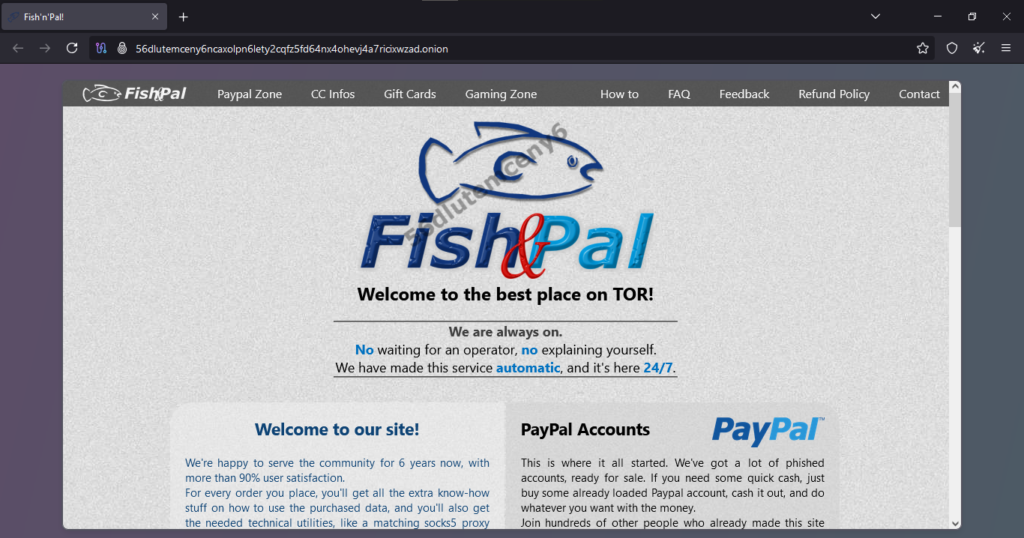Table of Contents
ToggleFish’n’pal – TOR Scam Report (51)
Onion Link : http://56dlutemceny6ncaxolpn6lety2cqfz5fd64nx4ohevj4a7ricixwzad.onion
Scam Report Date : 2024-11-29
Client Scam Report Breakdown
Original Scam Report :
The reported scam highlights a transaction involving an unidentified vendor, serving as a concise yet powerful description of the fraudulent activity. This statement implies that a customer completed a purchase but received no product or service in return, confirming the vendor’s lack of legitimacy. The brevity of the report suggests either frustration or limited documentation, common among victims of such scams who may feel powerless or unwilling to expend additional effort.
Key indicators of the scam include the vendor’s explicit “no return” policy and the absence of post-sale accountability, both of which signal potential red flags in any transaction, particularly in unregulated or anonymous marketplaces. This scenario illustrates a common pattern in scams, where vendors exploit trust and rely on the anonymity of digital platforms to evade accountability.
Segment 2: Defining Key Terminology
To fully grasp the implications of this report, it is crucial to define the key terms and concepts embedded in the narrative:
- Bought and Paid: This phrase indicates that the victim completed the transaction, often meaning payment was successfully processed via cryptocurrency or other untraceable methods.
- No Return: The explicit lack of a return policy is a hallmark of fraudulent operations, as it eliminates any possibility of refunds or exchanges. This phrase also reflects the scammer’s intent to avoid accountability.
- 100% Scam: A definitive statement confirming the absence of delivered goods or services. It reflects the victim’s certainty about the fraudulent nature of the transaction, often based on direct experience or similar reports.
- Anonymous Marketplaces: Platforms operating outside traditional regulations, frequently on the dark web, where sellers and buyers remain untraceable. These platforms often attract scams due to the lack of oversight.
By understanding these terms, we can contextualize the victim’s experience and recognize warning signs that might prevent future occurrences. The vendor’s approach—leveraging anonymity and clear disclaimers to absolve themselves of responsibility—illustrates a deliberate strategy to defraud unsuspecting buyers.
Segment 3: Analysis and Implications
This scam epitomizes a broader trend in unregulated online marketplaces, where anonymity and the absence of enforceable consumer protections empower fraudulent vendors. The simplicity of the scam’s execution—accepting payment without providing the agreed-upon product or service—demonstrates how low effort, high-reward tactics thrive in these environments. Victims are often left without recourse, as the platforms facilitating these transactions typically lack mechanisms for dispute resolution or buyer protection.
From an analytical perspective, combating such scams requires a multi-pronged approach. For individual buyers, education is paramount; understanding the risks associated with anonymous transactions and identifying red flags like “no return” policies can help prevent victimization. On a systemic level, law enforcement and cybersecurity teams can focus on disrupting the infrastructure supporting these marketplaces, such as payment processing mechanisms or hosting services.
The brevity of the victim’s report underscores the emotional toll these scams take, leaving individuals feeling disillusioned and abandoned. Addressing this issue requires not only technical solutions but also support systems for victims, including reporting mechanisms and awareness campaigns. By raising the visibility of such scams and equipping users with the tools to recognize them, stakeholders can foster a safer online environment.







